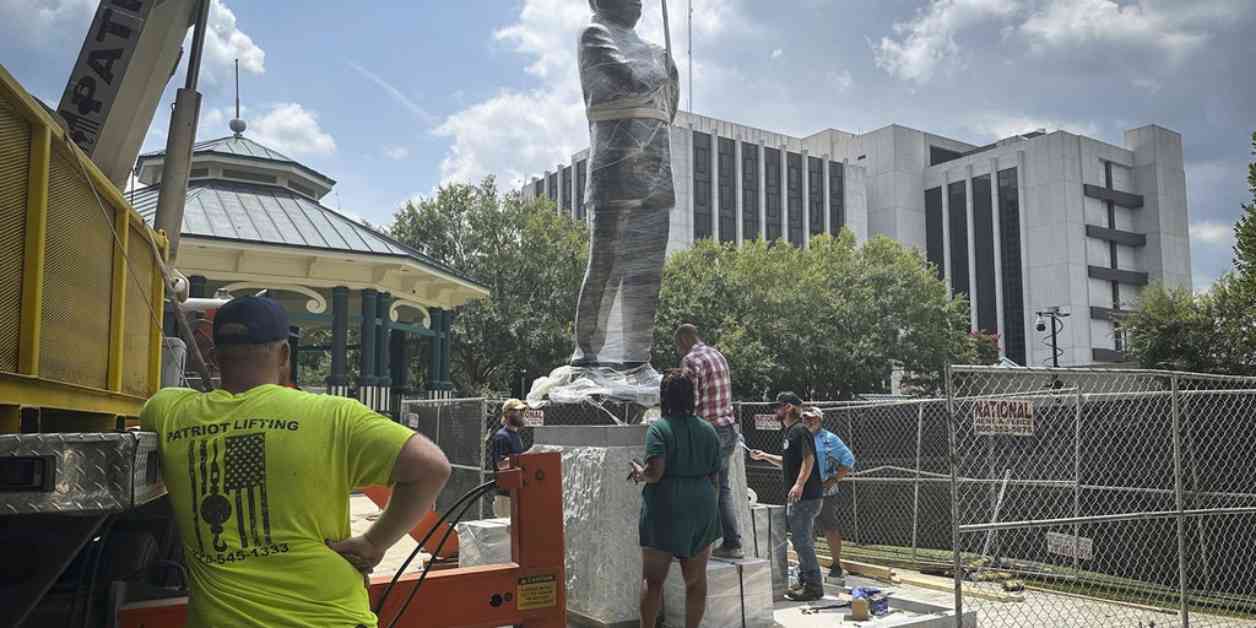A historic change took place in Decatur, Georgia, as a large bronze statue of Congressman John Lewis replaced a monument to the Confederacy that had stood for over a century. The removal of the Confederate monument in 2020 marked a significant moment in the town’s history, and the installation of the statue of John Lewis serves as a powerful symbol of progress and change.
Replacing the Confederate Monument
The Confederate monument that previously occupied the spot where John Lewis’s statue now stands was a stone obelisk erected by the United Daughters of the Confederacy in 1908. For years, the monument was a source of controversy and division in the community, serving as a painful reminder of the country’s dark past of slavery and racial segregation. However, in 2020, following the death of George Floyd and the subsequent protests over police violence, the monument became a focal point for calls for its removal.
The removal of the Confederate monument was not without its challenges. As work crews dismantled the obelisk, onlookers gathered to witness the historic moment. There were chants of “Just drop it!” as the monument was lifted from its base, a testament to the strong emotions surrounding its removal. Despite the contentious nature of the process, the decision to take down the Confederate monument was a necessary step towards acknowledging the painful legacy of slavery and racism in America.
John Lewis: A Civil Rights Icon
In place of the Confederate monument now stands a statue of Congressman John Lewis, a revered figure in the civil rights movement. John Lewis was known for his unwavering commitment to justice and equality, and his statue serves as a tribute to his legacy of activism and advocacy. The bronze statue, crafted by the acclaimed sculptor Basil Watson, stands at 12 feet tall, symbolizing the towering impact that John Lewis had on the fight for civil rights in America.
John Lewis’s statue is a fitting replacement for the Confederate monument, as it represents a stark contrast in values and ideals. While the Confederate monument celebrated a dark chapter in American history, John Lewis’s statue honors a man who dedicated his life to fighting against injustice and discrimination. The installation of the statue is a poignant reminder of the progress that has been made in the ongoing struggle for civil rights and equality.
Legacy of ‘Good Trouble’
Throughout his life, John Lewis was a proponent of getting into “good trouble” for a righteous cause. He believed in the power of peaceful protest and civil disobedience to effect change and bring attention to social injustices. The concept of “good trouble” has become synonymous with John Lewis’s legacy, inspiring a new generation of activists to stand up and speak out against injustice.
The removal of the Confederate monument and the installation of John Lewis’s statue are both examples of individuals and communities getting into “good trouble” to challenge systems of oppression and inequality. By taking a stand against symbols of hate and division, the residents of Decatur have shown their commitment to building a more inclusive and just society. The statue of John Lewis serves as a beacon of hope and inspiration, reminding us of the power of ordinary people to make a difference in the world.
In conclusion, the installation of the statue of Congressman John Lewis in Decatur, Georgia, represents a significant moment in the town’s history. The removal of the Confederate monument and the replacement with a statue of a civil rights icon like John Lewis is a powerful symbol of progress and change. As we reflect on the legacy of John Lewis and the ongoing fight for justice and equality, may we be inspired to continue getting into “good trouble” for the causes that matter most.


